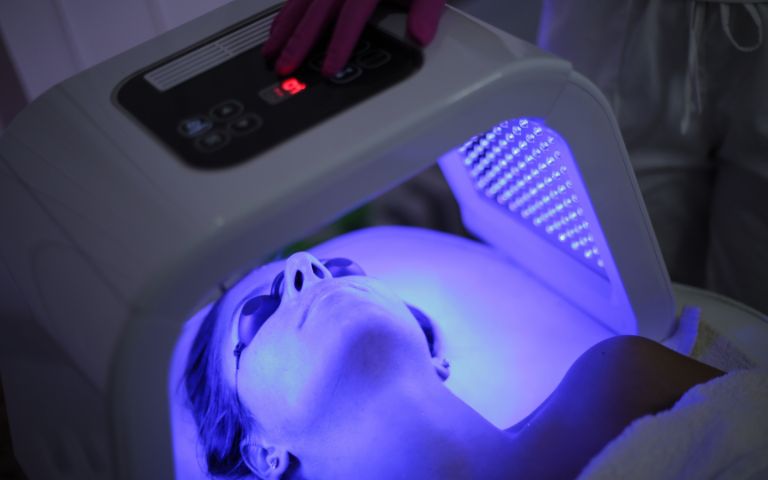Research with
Huelight technology
We have been collaborating for over a decade with leading educational and healthcare institutions.
To this day, our devices are featured in the most published research in the field of photobiomodulation.

clinical research participants
clinical research participants
clinical research participants
- All
- WB-PBM Therapy
- Hyperbaric Oxygen Therapy
- Hydrogen Therapy
- Sonicwave
- All
- Alzheimer's disease
- Brain injury
- Hemorrhage
- Lymphatic drainage
- Parkinson's Disease
- Stroke

PBM Therapy and the Gut Microbiome: Impacts on Parkinson’s Disease

PBM therapy led to improvements in gut microbiome composition in Parkinson’s disease patients. Most participants showed beneficial shifts in the Firmicutes-to-Bacteroidetes (F:B) ratio, a key indicator of gut health.
2021, School of Health Sciences, Australian Catholic University, North Sydney, NSW 2060, Australia
PBM and Neurofeedback in Alzheimer’s and Parkinson’s Disease: An Integrative Review

Patients undergoing PBM demonstrated greater improvements in executive function tests, including clock drawing, immediate recall, practical memory, visual attention, and task-switching.
2019, Quietmind Foundation, Elkins Park, Pennsylvania, USA
PBM as an Innovative Approach to Enhancing the Brain’s Lymphatic Drainage System
PBM enhances cerebrospinal fluid drainage, which could be crucial for treating conditions linked to impaired brain lymphatic function.
2022, School of Materials Science and Engineering, Hefei University of Technology, China
Combined PBM and Cell Therapy for Parkinson’s Disease: Enhancing Neuroregeneration and Tremor Reduction
A meta-analysis found that combining cell therapy with PBM significantly improved Parkinson’s disease symptoms.
2022, Shahid Beheshti University of Medical Sciences, Laser Applications in Medical Sciences Research Center, Tehran, Iran
This study demonstrated that whole-body vibration exercise inhibits apoptotic neuronal death induced by intracerebral hemorrhage, thereby promoting the recovery of brain function after intracerebral hemorrhage.
Department of Exercise Physiology, Graduate School of Korea University, May 2012
A case-control study on the effects of hyperbaric oxygen therapy on patients with cerebral infarction
These results suggest that hyperbaric oxygen therapy (HBOT) could be a useful medical treatment for cerebral infarction. Further studies involving more cases are needed to confirm the definitive effectiveness of HBOT in treating cerebral infarction.
Department of Internal Medicine, Dongseo Oriental Medicine Hospital, Republic of Korea, September 2008.
Hyperbaric oxygen alleviates secondary brain injury after trauma by inhibiting the TLR4/NF-kB signaling pathway
These results suggest that hyperbaric oxygen therapy (HBOT) could be a useful medical treatment for cerebral infarction. Further studies with more cases are necessary to confirm whether HBOT is definitively effective for treating cerebral infarction
Department of Hyperbaric Oxygen, Navy General Hospital, Beijing, China, August 2015
Hyperbaric oxygen inhibits HT22 and PC12 cell damage caused by oxygen-glucose deprivation/reperfusion: suppression of ferroptosis mediated by the Nrf2/System Xc-/GPX4 axis
These parameters were significantly reversed by HBO, indicating that HBO can protect HT22 and PC12 cells from damage induced by oxygen-glucose deprivation/reperfusion. This protection is achieved through the suppression of ferroptosis mediated by the Nrf2/System Xc-/GPX4 axis
Department of Pharmacy, Guangxi Zhuang Autonomous Region and Guangxi People's Hospital, Nanning Medical Research Institute, Guangxi Province, China, September 2022
Hyperbaric oxygen therapy improves Parkinson's disease by promoting mitochondrial biogenesis through the SIRT-1/PGC-1α pathway
The current study provides preliminary evidence suggesting that HBOT treatment can reduce neuroinflammation through the inhibition of the NF-kB signaling pathway and promote neurogenesis via the activation of the CREB/BDNF pathway. Additionally, this therapy has the potential to improve mitochondrial biogenesis through the SIRT-1/PGC-1α-dependent signaling pathway and enhance dopamine function…
Department of Anesthesiology, Kaohsiung Medical University, Kaohsiung, Taiwan, April 2022
Observation of the effects of oxygen administration on visuospatial cognitive performance using time-course data analysis of fMRI
During visuospatial tasks, high-concentration oxygen administration sufficiently enhances oxygen supply, leading to greater activation of neural networks and improved performance in visuospatial tasks
Department of Biomedical Science and Engineering, Konkuk University, March 2005
Hyperbaric oxygen therapy improves neurocognitive function in post-stroke patients – a retrospective analysis
HBOT induces significant improvements in all cognitive domains, even in the chronic phase following a stroke. When selecting stroke patients for HBOT, decisions should be based on functional assessment and baseline cognitive scores rather than the type, location, or side of the stroke lesion
Department of Neurosurgery, Galilee Medical Center, Nahariya, Israel, January 2020
Systematic review and dose-response analysis: the effects of hyperbaric oxygen therapy in persistent post-concussion syndrome following mild traumatic brain injury
Several randomized and randomized controlled trials have shown that HBOT at 1.5 ATA oxygen produces statistically significant results in symptomatic and cognitive improvements in patients with persistent post-concussion syndrome following mild traumatic brain injury
Department of Emergency Medicine, Division of Hyperbaric Medicine, Louisiana State University Health Sciences Center, School of Medicine, New Orleans, Louisiana, USA, 2022





